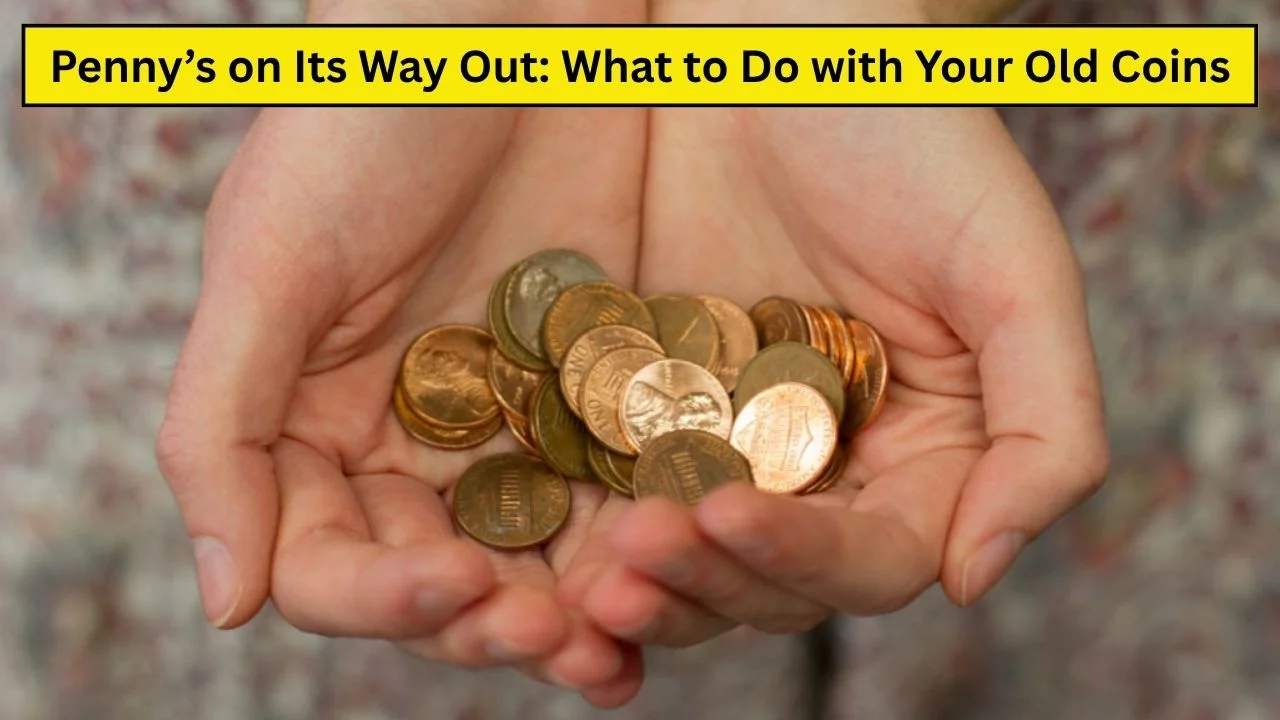Penny’s on Its Way Out: What to Do with Your Old Coins: The U.S. Treasury’s decision to stop minting pennies, announced in February 2025, has folks rethinking the coins in their pockets. With each penny costing nearly four cents to make, the government plans to save $56 million a year by halting production in early 2026. Over 114 billion pennies are already in circulation, but some could become worth more than their one-cent face value, especially rare ones. So, what should you do with those pennies piling up in your jars?
Why Pennies Are Worth Saving
Even though pennies will still be legal to use, they’ll get harder to find once minting stops. Coin experts like Sarah Thompson, who runs a coin shop in Austin, Texas, say copper pennies could rise in value. “Copper prices are climbing, and some pennies are already worth two to three cents just for the metal,” she explains. Rare pennies, like those with minting errors, could be worth thousands or even millions. Checking your change now could lead to a big payoff.
Rare Pennies to Hunt For
Some pennies are collector’s gold. Here’s a look at the most valuable ones still out there:
| Coin | Estimated Value | Key Feature |
|---|---|---|
| 1943-D Bronze Wheat Penny | Up to $159 million | Bronze error, not steel |
| 1909-S VDB Lincoln Cent | Up to $258,000 | “VDB” initials on back |
| 1969-S Doubled Die Penny | Up to $126,000 | Doubled text on front |
| 1914-D Lincoln Penny | Up to $159,000 | Low mintage of 1.2 million |
How to Spot a Valuable Penny
Start by checking the year and mint mark a tiny “D” for Denver, “S” for San Francisco, or no mark for Philadelphia. For the 1943-D Bronze Wheat Penny, look for a bronze color instead of the steel used in 1943. The 1969-S penny might show doubled text, like “LIBERTY,” under a magnifying glass. Pennies with the wheat stalk design on the back, made from 1909 to 1958, are often the most valuable. If you find something unusual, take it to a coin shop or appraiser to check its worth.
Options for Your Pennies
If you have a jar of pennies, you’ve got choices. Roll them up and take them to a bank—most accept rolled coins for deposit. Coin-counting machines at grocery stores, like Coinstar, can turn pennies into cash or gift cards, though some charge a fee (around 11-12%). You can avoid fees by choosing e-gift cards for places like Amazon. Charities often accept loose change for donations, too. Thompson suggests keeping pennies, especially older copper ones, as their value might grow as they become scarcer.
Make the Most of Your Change
With pennies disappearing, now’s the time to sort through your coins. You might find a rare gem worth a fortune, or at least turn your spare change into something useful. Social media is buzzing with stories of people finding valuable pennies, and coin shops are seeing more folks bringing in jars to check. Whether you cash them in, donate them, or hold onto them hoping for a value spike, your pennies could be more than just small change. So, grab that piggy bank and start looking—you never know what treasure you might find.
FAQs
Q: Why is the penny being phased out?
A: The cost to produce a penny is more than its actual value, making it economically inefficient. Many countries have already eliminated their lowest-denomination coins for similar reasons.
Q: Are old pennies still usable?
A: Yes, pennies are still legal tender, but they may be gradually removed from circulation over time.
Q: Should I save my pennies?
A: It depends! Rare or older pennies can be valuable to collectors. Otherwise, you can roll them up and deposit them at a bank or use coin-counting machines.




